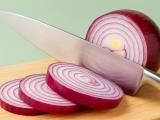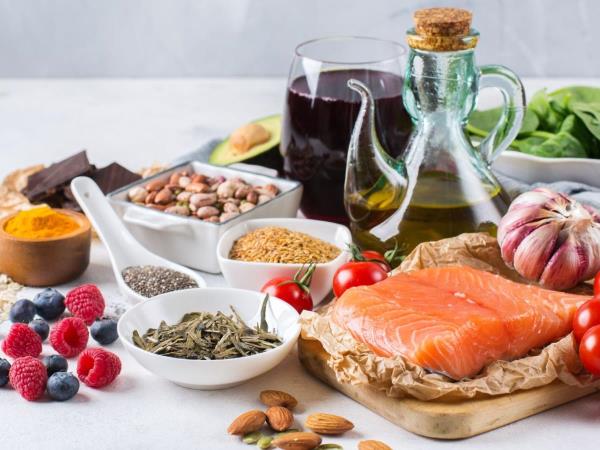What is the Nordic diet?
Very simply - it's a way of eating that has developed in the northern European countries, namely in Norway, Denmark, Sweden, Finland, and Iceland. It is based on what nature provides there: fish, wild berries, tubers, roots, herbs, and above all, lots of foods that grow or thrive in cold climates. Although it sounds ancient, the modern version of this diet was formed only in 2004 when a group of scientists, nutritionists, and even top chefs decided to show the world that we can fight obesity and diseases with local, seasonal, and natural foods.
This diet was created in response to the fact that Nordic countries have a significantly lower obesity rate than the rest of the Western world. For example, according to WHO data from 2022, Denmark has 20.1% of adults with obesity, while the USA has as much as 41.9%. Slovenia is at 21.2%, which means that we could also learn something from it.
Why does it work?
In simple terms - Nordics eat clean, natural, moderate, and seasonal. A typical meal for them is rye bread with fish, a cup of oatmeal with blueberries, or a root vegetable soup with legumes. In addition, they hardly consume sweetened drinks, fast food, and processed meats.
Instead of butter and lard, they use rapeseed oil, which is full of omega-3 fatty acids - these "good fats" lower bad cholesterol (LDL) and raise good cholesterol (HDL). Rapeseed oil also has more vitamin E than olive oil and contains very few saturated fats, making it excellent for heart health. One tablespoon of rapeseed oil contains about 1.3 g of alpha-linolenic acid (ALA), which is almost 100% of an adult's daily needs.
Another star of this diet is fish, which they eat up to three times a week. Salmon, herring, trout, and cod are not only rich in proteins but also contain a vast amount of omega-3 fatty acids. These are crucial for the functioning of the brain, eyes, and heart. One serving (100 g) of salmon, for example, contains 2260 mg of EPA and DHA - these are the two most beneficial forms of omega-3.
Special features of the Nordic diet
Unlike the Mediterranean diet, which focuses on tomatoes, olives, and wheat, the Nordic diet is full of whole grains like rye, oats, and barley. These grains are rich in fiber, which aids digestion, regulates blood sugar, and provides long-lasting satiety.
Interestingly, Finns consume an average of 20-25 g of dietary fiber per day, while in many Western countries, this number is barely 15 g. The recommended daily amount is at least 25 g!
In addition, the Nordic diet includes a lot of wild berries, such as blueberries, cranberries, sea buckthorn, and cloudberry. These berries are not only full of vitamins (especially C and A) but also rich in anthocyanins, natural pigments with strong antioxidant properties. According to a study published in the American Journal of Clinical Nutrition in 2021, volunteers who consumed 200 g of blueberries daily for 12 weeks significantly improved vascular function and reduced inflammatory markers in the blood.
It also lowers blood pressure, and sugar...
Of course, the most important thing is that this way of eating not only acts as a preventive measure but has actual healing effects. In 2014, one of the most important studies was published, where 200 adults with an average body mass index of 30.2 (meaning obesity) were monitored for 6 months. One group followed the Nordic diet, while the other followed the typical Western diet. The results showed that those following the Nordic way had a systolic blood pressure decrease by 5.1 mmHg and diastolic by 3.2 mmHg. They also had better cholesterol levels, less inflammation in the body, and even lower insulin levels.
If that doesn't convince you enough, perhaps this data will: in the group following the Nordic diet, 22% of participants reduced their weight by more than 5 kg, while only 8% did in the control group. And all of this without counting calories!
Can the Nordic diet heal?
We won't say it's miraculous. But the World Health Organization has confirmed that - similar to the Mediterranean diet - the Nordic diet can also help prevent type 2 diabetes, cardiovascular diseases, and certain types of cancer. It's not just a diet in the classical sense - it's a way of life.
Furthermore, it's not just about what you eat, but also how you eat. In Nordic countries, people take time for their meals. The food is prepared with respect for locally and seasonally grown ingredients, and the meal is consumed slowly, often in good company. As our grandmothers used to say - food eaten without stress and with joy also works better.
What does the Nordic diet include?
- Fruits and vegetables - especially root vegetables (like turnip, parsnip, carrot) and berries.
- Legumes and potatoes - rich in starch, fiber, and proteins.
- Whole grains - especially oats, rye, and barley.
- Nuts and seeds - a rich source of healthy fats and vitamins.
- Fish and seafood - at least 2-3 times a week.
- Rapeseed oil - instead of butter or olive oil.
- Herbs and wild plants - dill, thyme, blueberries, nettles...
What should be limited?
If you want to follow the northern path, it is good to avoid sweetened drinks, processed foods, fast-food meals, and processed meats. Red meat should be consumed rarely, and if so, it's best to opt for game - Nordic people prefer elk or venison meat over pork.
Dairy products should also be consumed in moderation, but those used often are fermented - like kefir, sour milk, or skyr (a dense, protein-rich Icelandic style of yogurt).
In conclusion...
If you think this is just another fad, remember that the Nordic diet is more of a return to roots than something new. If you resonate with the idea that health can come from a spoonful of oats, blueberries, and rapeseed oil, then this is the right path for you.









 Would you like to be informed about news on the website?
Would you like to be informed about news on the website?

